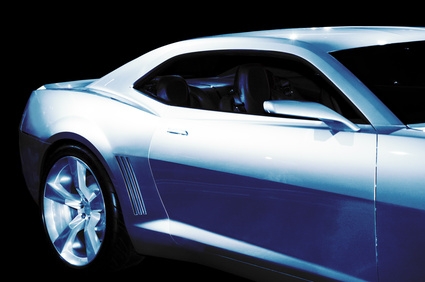
While production numbers tell us that most Camaros ever sold were equipped with four or six cylinders, it was Chevrolet's world-beating small block V8 (in 350 and 305 form) that made the Camaro famous. Every generation of Camaro and Corvette have come with more than one small block option since the small block originally debuted in 1955. The small block and Camaro have enjoyed a sort of tandem evolution, becoming progressively more powerful, more efficient and more sophisticated with every iteration.
Retrofit newer small block Chevy heads onto older engines for an increase in power. Chevrolet's basic small block remained in continuous production for nearly 50 years, so some of the best and cheapest upgrades come from GM itself. L31 (Vortec 5700) heads were the last and most advanced ever produced that are a direct bolt-on for the traditional small block, and are capable of supporting over 450 horsepower in stock form (about 550 after porting).
Consider L98 (1985-1991 Corvette) heads if you want high horsepower with factory heads but don't want to deal with using a Vortec-specific manifold and headers; they'll support about 400 horsepower in stock form and over 450 when ported.
Supercharge or turbocharge the engine. Small block Chevy engines are indisputably the most popular V8 on Earth, and GM has made over a million of them since 1955. You'd have a difficult time finding a domestic aftermarket parts supplier that doesn't make something for small block applications, which means the market is rife with cheap, comprehensive, well-engineered and easily-available bolt-on turbo and supercharger kits.
You'll need to install stronger pistons and an upgraded fuel system for really high horsepower levels, but almost any small block can withstand about five pounds of boost without internal modifications. Considering that one pound of boost is worth about eight (supercharger) to ten (turbo) percent more power, that's an easy 100 to 150 horsepower boost without ever removing the valve covers.
Install a wet-flow plate or direct port nitrous system with propane fuel enrichment and "colder" heat range plugs. Again, the small-block Chevrolet is a well-researched entity; you won't have a hard time discovering how much nitrous your particular engine can take and not self-immolate. Using propane instead of gasoline for your nitrous injection will require a little more research and tuning to get the air/fuel ratio and jetting right, but the propane's 110 octane and latent heat of vaporization (drop in gas temperature upon injection) will help to increase power and reduce the likelihood of engine-killing detonation.
Bolt-on plate systems (which sandwich between the carburetor/throttle body and manifold) and direct port injection systems (which use one injector for each port, like standard fuel injection) are common and selection is fairly vast for all generations of small block engine. Plate systems usually work best with carbureted or throttle-body-injected manifolds (which carry both air and fuel); direct port systems are better for later multi-port fuel injected engines that use plastic manifolds.